Generation Soccer
A brief history of the culture and innovation behind the beautiful game in the United States
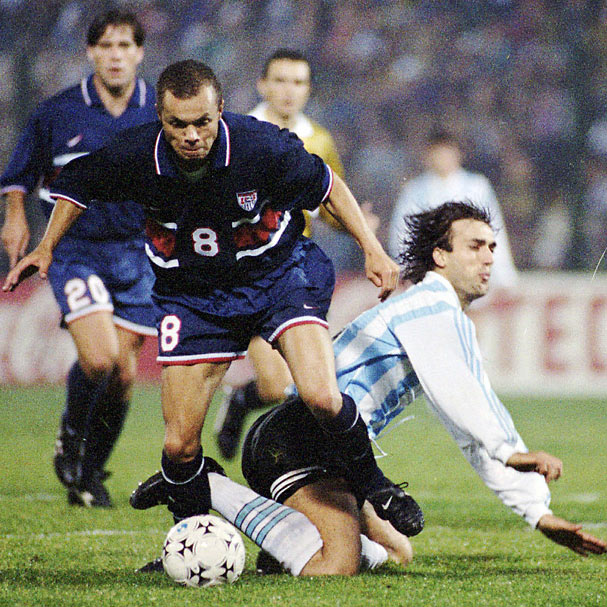
Some 20 years ago, US soccer was more closely tied to orange slices and minivans than to the intense passion for the sport seen nearly everywhere else in the world. Now, with excitement for the World Cup reaching new heights, we took a look at what fueled this cultural shift, a change that could mean the biggest year for North American soccer yet. From stadium design to how a Texan rapper became the symbol of a new type of player, these facts are your cheat sheet for a lesson in the evolution of the game in the United States.
It all goes back to 1994 when—thanks in part to the support of President Clinton and Al Gore—the US hosted the World Cup for the first time. The event spurred massive investments, including from Nike who, that year, deepened their commitment to soccer by signing several Brazilian National Team players. Brazil won the Cup and, after seeing the many products and major stars at Nike’s 2014 Global Football Summit, it seems like the brand hasn’t looked back—and neither has the States.
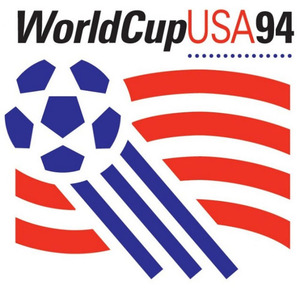
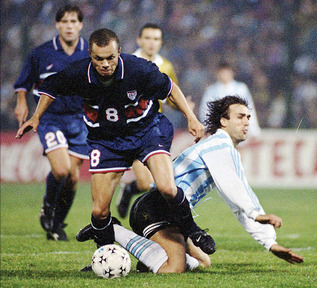
1994
In addition to being commemorated on a stamp, the US World Cup breaks previous attendance records by more than one million (cumulative total attendance: 3,587,538), creating a surplus of approximately $50 million, more than double projections. This surplus funds the formation of Major League Soccer a couple of years later.
1995
Nike signs the US men’s and women’s national teams, as well as several other national teams. Pictured: The USMNT surprises the world when they defeat Argentina in the Copa America.
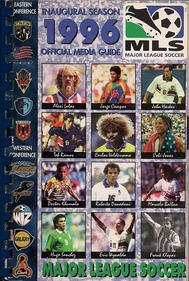
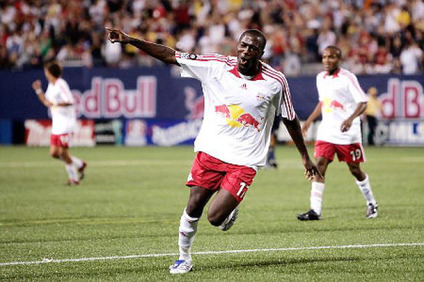
1996
Part of their successful bid to host the 1994 World Cup, US Soccer pledges to create a professional outdoor league which launches as the MLS. The organization starts to develop American players in a way that was previously impossible.
1997
A joint venture with the MLS and the United States Soccer Federation to identify and develop the talents of the best emerging young players aged 18-22, Project 40 launches and signs Carlos Parra as the first player. The program, renamed Generation adidas in 2005, has nurtured several key players including none other than Clint Dempsey (2004) and current favorite Jozy Altidore (2006).
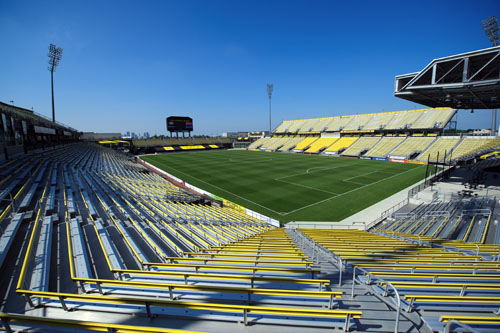
1998
While Bruce Arena replaces head coach Steve Sampson (who had resigned after the US finished last in the World Cup), several youngsters on the US team showed skill in the games—enough to start a trend of top MLS players getting signed to European clubs.
1999
Columbus, Ohio opens their Crew Stadium, the first soccer-specific stadium—a smaller, European-based design in a rectangular configuration that holds between 18,000-30,000 and puts spectators closer to the action in field-level seats. The development starts a trend that puts the focus on fans and does away with the empty seats often seen in multipurpose stadiums.

2000
MLS rewrites their rules, allowing tie games and advertising on jerseys, while also eliminating the shootout and countdown clock—all of which brings the US closer to traditional soccer culture.
2002
MLS folds two Florida franchises for financial reasons. Also that year, Nike’s “Secret Tournament” campaign, pegged to the World Cup and rumored to have cost $100 million, incorporates advertising, the internet, public relations and events, establishing the approach that still informs their marketing today.
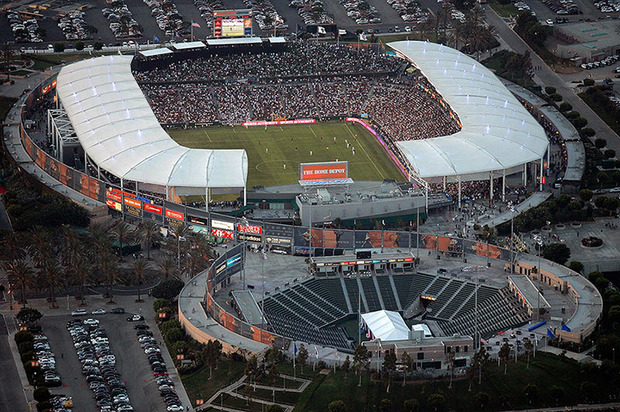
2003
US Soccer’s National Training Center opens at the Home Depot Center in Carson, Ca. The $130 million facility gives US soccer a home for the first time in their 90-year history.
2004
Soccer United Marketing, already an MLS partner, shifts into high gear with the hire of former NFL director Douglas Quinn, who immediately spearheads a deal with adidas, among other lucrative moves.
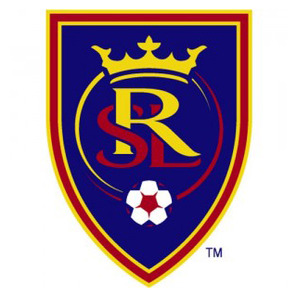
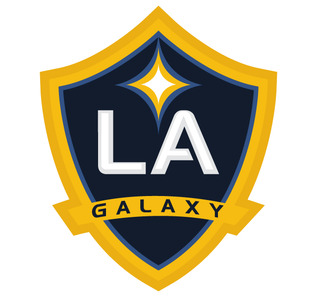
2005
Major League Soccer expands, adding Los Angeles (who becomes the first city to host two teams) and Salt Lake City to bring the total number of teams to 13.
2006
The telecasts of the 2006 FIFA World Cup Final attract an estimated 17 million American viewers, higher than the 15.8 million average viewership of the World Series that year.
2007
The American Outlaws, an unofficial fan group, forms and goes on to attract more than 100 chapters nationwide.
2009
MLS expands to Seattle in a move that proves highly successful, with league-leading ticket and merchandise sales, and sold-out attendances that continue today.
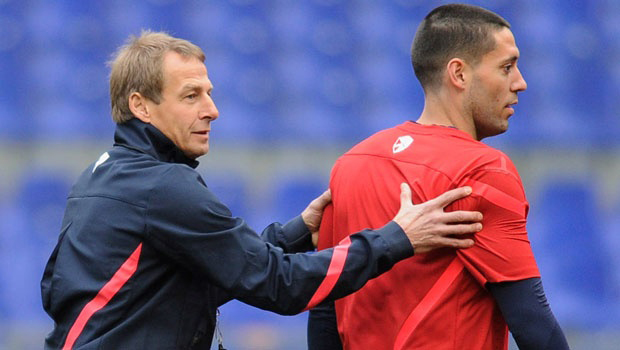
2010
The 2010 World Cup final game draws 24.3 million viewers in the United States, well higher than the 14.3 million average viewership of the 2010 World Series.
2011
Former Germany international and FIFA World Cup winner Jurgen Klinsmann takes the helm of the US men’s team, a switch that many credit with their steady rise.
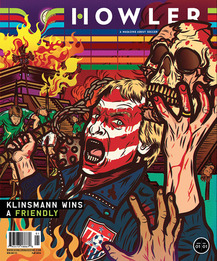
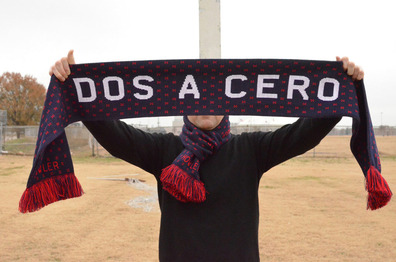
2012
After a successful Kickstarter campaign, Howler, a quarterly magazine helmed by former Esquire and National Geographic editors, launches. Howler’s first cover makes a real statement, depicting Klinsmann as a war painted leader amongst impaled players from Mexico’s national team. The taunting of our rivals to the south continues with publication’s “Dos a Cero” scarf, a reference to the score by which the US has beat Mexico four times.
2013
New York City FC pays a record $100 million expansion fee for the right to join MLS in 2015, while the men’s national team qualifies for the World Cup in a match against Mexico’s “El Tri,” the fourth U.S. home victory over their rivals with a 2-0 score—only furthering the repetitive result’s fame.
2014
Klinsmann gives Landon Donavan, the National Team’s all-time leader in goals and assists, the boot from the team in May. More recently, Nike releases their latest video with a cast of soccer’s finest—only this time the short is animated and it includes a rare appearance by a US player, Tim Howard.
Images courtesy of United States Postal Service, AP, Fun While It Lasted, Local Media Group Inc, Game Oldies, AMA Sports Photo Agency, Sports Logos, American Outlaws, Soccer by Ives, MLS, Howler, NYCFC












